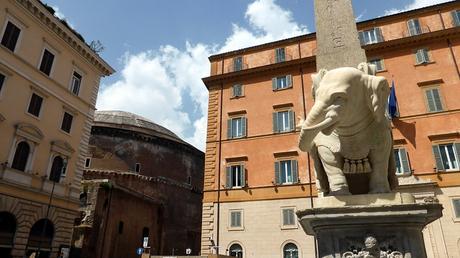
Rome
The Roman Empire is a legendary civilisation, known for its iconic structures, inventive creations, and contemporary laws. It was once the most powerful civilisations in the entire world, controlling the majority of Europe and even two other continents. However, after nearly a thousand years ruling, the civilization meets its end, known as the famous fall of Rome. But how did this once great empire collapse to its knees? There is not one defining reason, but a series of factors that triggered the downfall.
It’s Beginning and Success
Before the Empire controlled the land, the Roman Republic governed the land for 500 years. This was a government body that officially ruled, with people voting in their leaders. However, the control soon shifted, with the leaders of the military coming into power and popularity, in particular, Julius Caesar. His took his powerful opportunity to seize control, becoming the dictator of Rome, which slowly dismantled the government. His assassination was the last nail of the coffin that triggered the official start of the Roman empire. With this new empire, the military was strong, the land vast, and the wealth great. Creativity and originality blossomed, with the invention in engineering, technology, and ethical issues that are still used today.Military Force
The empire was once known to have the world’s strongest army back during its time. Winning countless battles that gain control to a huge expanse of land. But with this grandeur, remaining in control for all outskirts of land became difficult. With an increase of land, the military became stretched too thin, using all their resources to defend their frontiers. Short on defence, they soon recruited foreign mercenaries in their armies. Unfortunately, these foreign soldiers were not loyal to the empire, and soon the officers turned against their Roman employers, with some even being a part of the final attack on the Western Empire.Finance Weakens
This once wealthy empire crumbled under their debt, with their distribution of finance distorting their success significantly. With the threat of invaders on the horizon, the empire threw their money to boost the military defence, neglecting a lot of other areas within the empire particularly their infrastructure. Slavery was a key support in the empire’s finance, but soon the supply of slaves dried up, causing the empire to lose its control. As well, the empire suffered inflation after the reign of Marcus Aurelius. This was all due to the empire no longer conquering new lands, and there for the flow of gold ceased. A majority of the gold was being spent by the rich Romans, there was less gold to use in coins. With the amount of gold in coins decreasing, the coins became less valuable, and to make up for this, a rise in cost ensured.Urban Decay
The wealthy Roman citizens lived in a Domus, otherwise known as a house. These structures had marble walls, complex coloured tiled floors, and large glass windows. Sadly, most Romans could not afford these luxuries and instead lived in small, smelly apartment houses. These apartments housed six or more stories which covered an entire block. There is documentation that at once point there were over 44 thousand apartment houses within the city walls. The higher and more unstable the houses were, the cheaper they became. The houses began to collapse, as well as the renters unable to pay forced onto the streets, ensuring countless homeless people and crime to grow.Public Health
The Romans although were brilliant in areas, did not possess the hygiene too is essential for long and healthy life. Hygienic kitchens, bathrooms, and streets were unknown, with washing hands after the bathroom or toilet paper non-existence. Blood and disease were spread easily throughout the city, particularly when the Colosseum was hosting games. The citizens were also being slowly poisoned by the water brought into their homes. This was due to the lead pipes used, which caused a much higher death rate.Technology
The Romans have gone down in history as some of the best engineers, but unfortunately, their technology advancement was also their downfall. This was all due to the last 400 years being significantly limited in their scientific achievements. With their only triumphs in engineering and public services, building marvelous roads, bridges, and aqueducts. Their scientific systems mainly in medicine relied greatly on human and animal labor. As the empire was growing in population, the products made could not keep up, and they failed to invent any new machines to produce more efficiently.Religious Change
All while the empire faced these issues, a new threat approach, in the name of a new religion; Christianity. The old religion saw the emperor as a god, with the focus on the glory of the state. However, Christianity disagreed with this, and soon changed the people’s mind in their religious beliefs. As the Emperor once had complete control because of his god status, the decrease in belief soon decreased the power the empire had over the public. Church leaders also took political roles within the governance, which created more power for the Christians.Power Struggles
Government corruption, political dispute, and power struggle all became leading issues by the end of the empire. Being Emperor turned into a death sentence, with more than 20 men taking the role of Emperor that ensured on-going assassinations and replacements in the span of 75 years. This weakens the emperor’s status and complete ruling, with different emperors focusing on different issues in their small reign. There are many more theorised factors that created the domino effect of the empire’s downfall, but what is known is that the Roman Empire took not just one day, but a series of years to completely crumble into ruin.Recommended Rome Tours: Rome Day Tour with Vatican & ColosseumTour Company: Sightseeing Tours Italy
Price: €119

